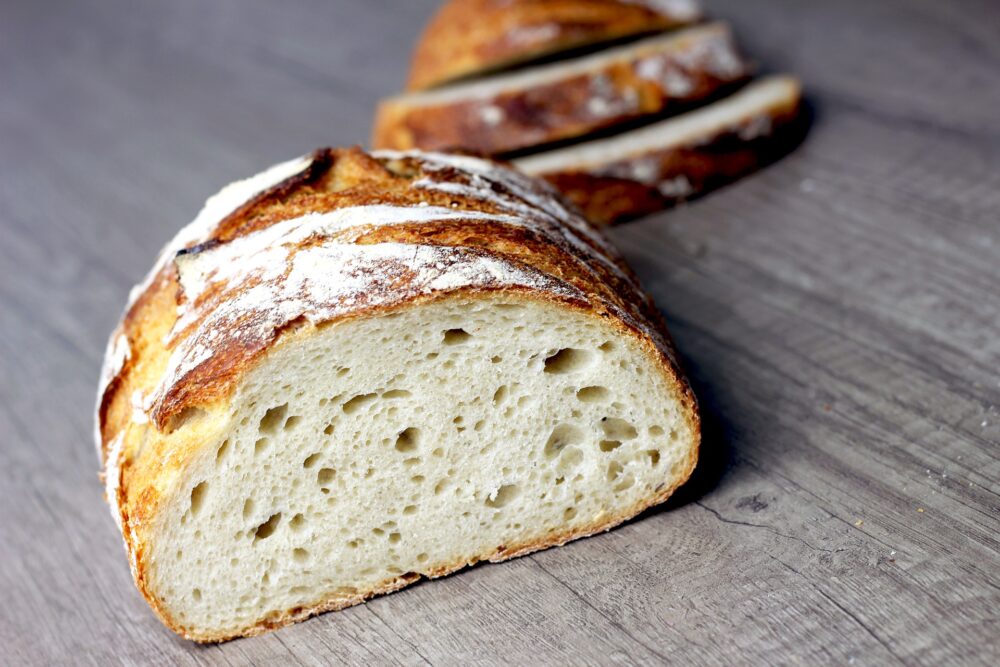Bread has always been a staple to humanity when it comes to times of crisis. The infamous pictures of bread lines during the Great Depression demonstrated the weight of the economic downturn in the United States. With an unemployment rate of about 25 percent, many people turned to local food banks and churches for bread and soup. This is not dissimilar to the winding lines of cars at food banks as a result of the current global pandemic.
Now, as the general public finds ways to entertain themselves in their own homes, many have turned to learning the art of baking bread at home. So much so that, along with toilet paper and basic cleaning supplies, flour has seemed to fly off the shelves. Forbes reported that King Arthur, America’s oldest flour company, experienced a 287 percent increase in March sales of its high-protein bread flour, a key ingredient in producing the gluten that gives bread its distinct chewiness. Along with flour, dry-active and instant yeast have also seemed to disappear from shelves, motivating more people to take part in growing their own yeast at home, which has led to bread-making becoming a popular trend. Northeastern students are well involved in the craze. Liz Gmoser, a fourth year mechanical engineering major, commented, “I started my starter because apparently I am one of the people who ‘if my friends were jumping off a bridge, I would too’ because all my friends were doing it and I wanted to try as well. Pierre, named because when all his little bubbles pop it’s like he’s peeing air, is unique because he’s a sturdy starter willing to put up with my sporadic feeding schedule. It’s been a fun quarantine journey, and he’ll be coming back to Boston with me.”
Sourdough is aptly named for the sour taste of the bread produced by the lactic acid bacteria, but varying species of bacteria and yeast impart a unique flavor and smell to every loaf.
“Starter” refers to a base mixture of flour and water (other ingredients can be added as well), that supports a culture of yeast and bacteria that naturally leavens sourdough bread. Sourdough is aptly named for the sour taste of the bread produced by the lactic acid bacteria, but varying species of bacteria and yeast impart a unique flavor and smell to every loaf. The varying species in starters can originate from dust in the air, the container it’s kept in, and even the hands that first form the starter. In fact, this diversity is so integral to sourdough that a lab out of North Carolina State University has made it their mission to track starters through a citizen science project. Participants send in their starters, and Professor Rob Dunn’s lab uses DNA sequencing to identify species across the Silva Database, a database of ribosomal RNA sequences. Now, they have built an interactive map of their participants showing the most common strains of yeast and bacteria in the starters of those regions. They have also performed an experiment correlating the bacteria on a select number of baker’s hands and their starters, showing the symbiotic relationship between our microbiome and the microbiome of the world around us (or the world of bacteria in a jar of starter).
Ultimately, many in quarantine have gained new skills and new behaviors in this momentary interruption of daily life. One of those skills has become baking, a historic tradition for human beings around the world. Culturing a sourdough starter is an excellent example of creative survival when the shelves are emptied of bread and yeast, and it has created a community of bacteria, yeast, and humans alike.
Trends in Food Science and Technology (2005). DOI: 10.1016/j.tifs.2004.02.012
American Society for Microbiology (2020). DOI: 10.1128/mSphere.00950-19
Image source: Pixabay.






